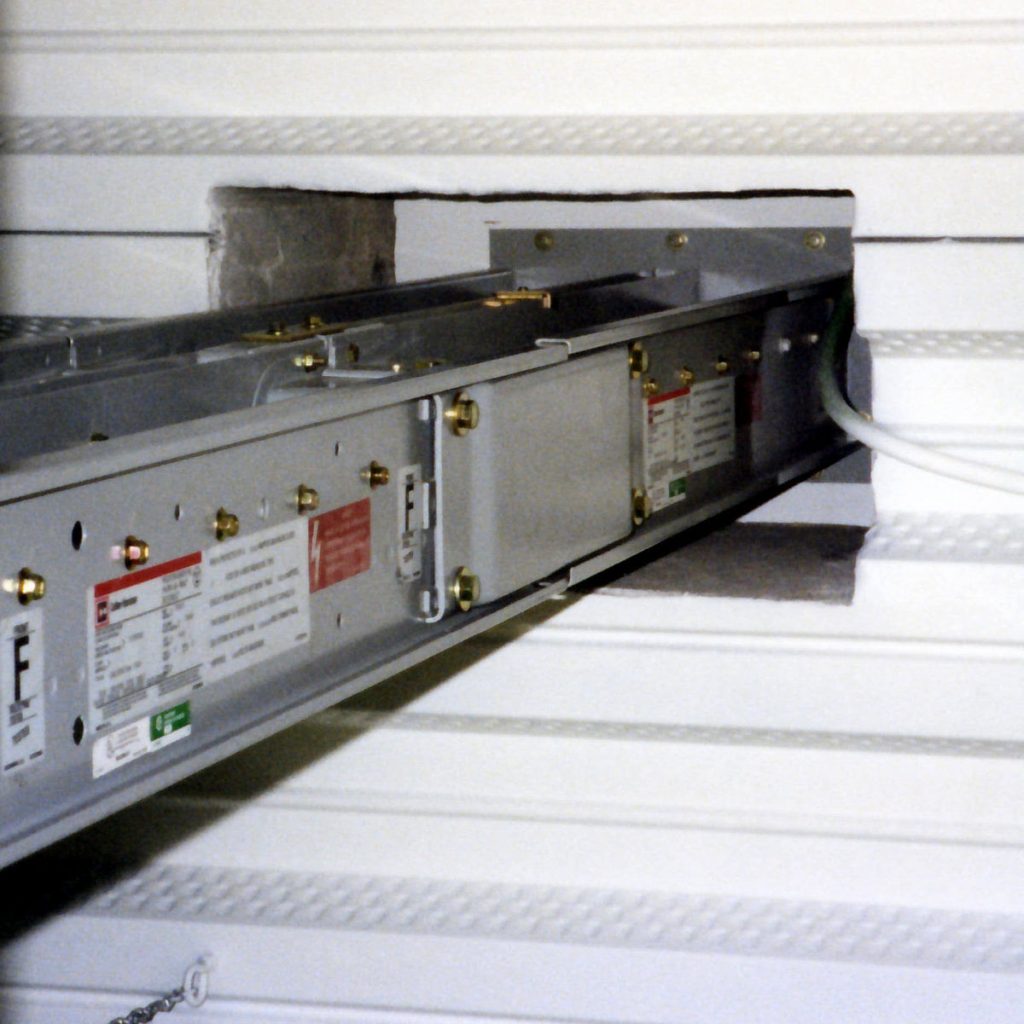Understanding electrical busway and bus duct is critical when selecting options for your specific power distribution requirements.
Need Bus Ducts For Your Project?
Get A Bus Duct QuoteSell To Us
Got Electrical Equipment You Don't Need?

Reduce Your Electrical Inventories & Earn Cash
Sell My EquipmentPanelboard
Need a Panelboard for Your Project/Job?

Our Experienced Sales Engineers Can Help Design the Right Panelboard For You
Learn MoreTransformer Oil Testing
Is Your Transformer Due For Servicing?

Get Your Oil Analysis & Fluid Testing Done By Our NETA-Certified Techs
Learn MoreElectrical Product Resources
Product Training Product Safety Product Guides Product News Featured ProductsBusway Vs. Bus Duct for Power Distribution
When it involves electricity distribution in a building, a busway system can be a game changer. Think about a network of electrical wires, sometimes called busbars, that are safely insulated to transport electricity throughout the facility. What makes busways so popular is their modular design; they’re simple to build, extend, and alter. This makes them a good solution where power requirements are continuously changing, like commercial buildings, industrial facilities, and data centers.
So, what’s the difference between a busway and a bus duct? The busway includes the full power distribution system, including the busbars and their protective enclosures. The bus duct refers to the actual casing that contains these busbars. Understanding these differences is required when selecting which option will work for your unique power distribution requirements. To learn more about using bus plugs for power distribution safety, read our post on Electrical Busway and Bus plugs for Power Distribution Safety
Electrical Busway and Bus Duct Installation for Flexibility
One of the most noticeable benefits of busway systems is their ease of electrical busway installation when compared to traditional wiring approaches. Because of their modular construction, bus ducts are generally easier to install. The components are intended to be simply installed on-site, allowing you to cut labor expenses and reduce the likelihood of installation problems.
Busway systems shine when it comes to flexibility and scalability. Busways are suited for changing situations where power requirements could shift over time. They are easily modified to change with variations in layout or load needs. This adaptability is especially useful in manufacturing facilities or data centers where the layout may need to be changed often. Whether you’re expanding or merely reorganizing, a busway system can easily meet your changing demands.

Busway Systems for Power Distribution Safety
When dealing with power distribution, safety is always an important issue, and electrical bus duct and busway systems provide various elements to aid with that. The bus duct’s protective casing is critical — it shields the conductors from physical damage, lowering the chance of electrical problems. Also, many contemporary busways have safety elements such as bus duct disconnects. These let you safely separate areas of the system for maintenance or upgrades, which is critical for a safe working environment.
Understanding the difference between a busway and a bus duct is also necessary for safety reasons. The busway system offers a comprehensive method to power distribution, while the bus duct protects the busbars from external threats.
Electrical Busways Reduce Cost of Labor
For cost effectiveness, busway systems make a compelling case. The upfront cost may be larger than regular wiring, but the long-term benefits can offset it. Because of the modular architecture, bus duct construction is faster and less labor-intensive, resulting in substantial cost savings, especially on big projects.
Traditional wire systems sometimes require substantial overhaul to accommodate changes, whereas busways allow for rapid and straightforward upgrades without incurring high costs. This flexibility, along with the endurance of busway systems, makes them an excellent economical alternative for institutions wanting to improve their power distribution infrastructure.

Types of Electrical Bus Duct in Busway Systems
| Type of Bus Duct | Purpose |
| Feeder Duct | Transports electrical power from the main distribution point to various locations without tap-off points, ideal for large facilities and high-rises. |
| Plug-In Duct | Features tap-off points for easy connection of electrical equipment, offering flexibility in dynamic environments like factories and data centers. |
| High Voltage Duct | Designed for handling and distributing high voltage power, used in industrial settings and power plants, with robust insulation for safety. |
| Air-Insulated Duct | Uses air as insulation, cost-effective for lower voltage applications in commercial and light industrial settings. |
| Sandwich Duct | Compact design with stacked busbars, ideal for space-limited environments needing a robust, compact solution. |
| Gas-Insulated Duct | Uses insulating gas to prevent faults, suitable for high voltage and outdoor applications where space or conditions limit traditional insulation. |
| Non-Segregated Phase Duct | Houses all three-phase conductors in one enclosure without barriers, suitable for lower voltage applications where space is less critical. |
| Segregated Phase Duct | Separates phase conductors within the same enclosure, reducing fault risk in higher voltage applications like substations. |
| Isolated Phase Duct | Places each phase conductor in its own enclosure, offering maximum protection in very high voltage applications like power generation. |
| Bus Duct Tap Box | Provides connection points for tapping off power, essential for flexible distribution and managing power loads. |
| Bus Duct Disconnect | Safety device for isolating sections of the bus duct during maintenance or emergencies, crucial for safe operation. |
Summary
Busway systems have several advantages over standard wiring techniques, including easier installation, increased safety, and better flexibility. Their modular architecture allows flexible reconfiguration and extension, making them perfect for applications with changing power requirements. Busways provide a dependable and efficient power distribution solution in industrial, commercial, and specialized environments such as data centers and healthcare facilities that can adapt to changing demands.
As businesses look for more versatility, scalability, and safety from their electrical infrastructure, busways are going to become the norm in modern power distribution. Busways, whether in new construction or retrofitting existing facilities, provide a flexible and cost-effective option that can keep up with today’s fast changing industry demands.
